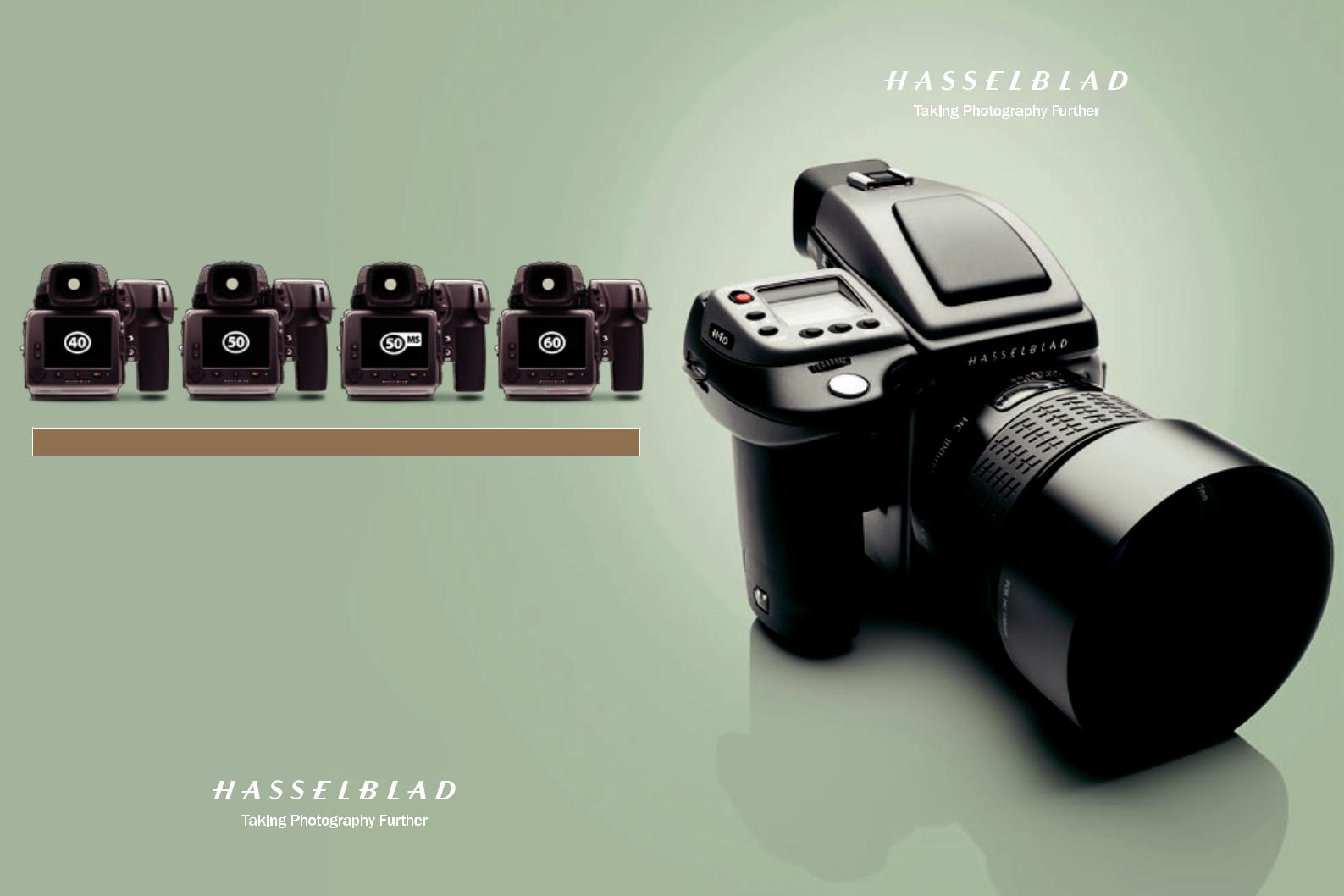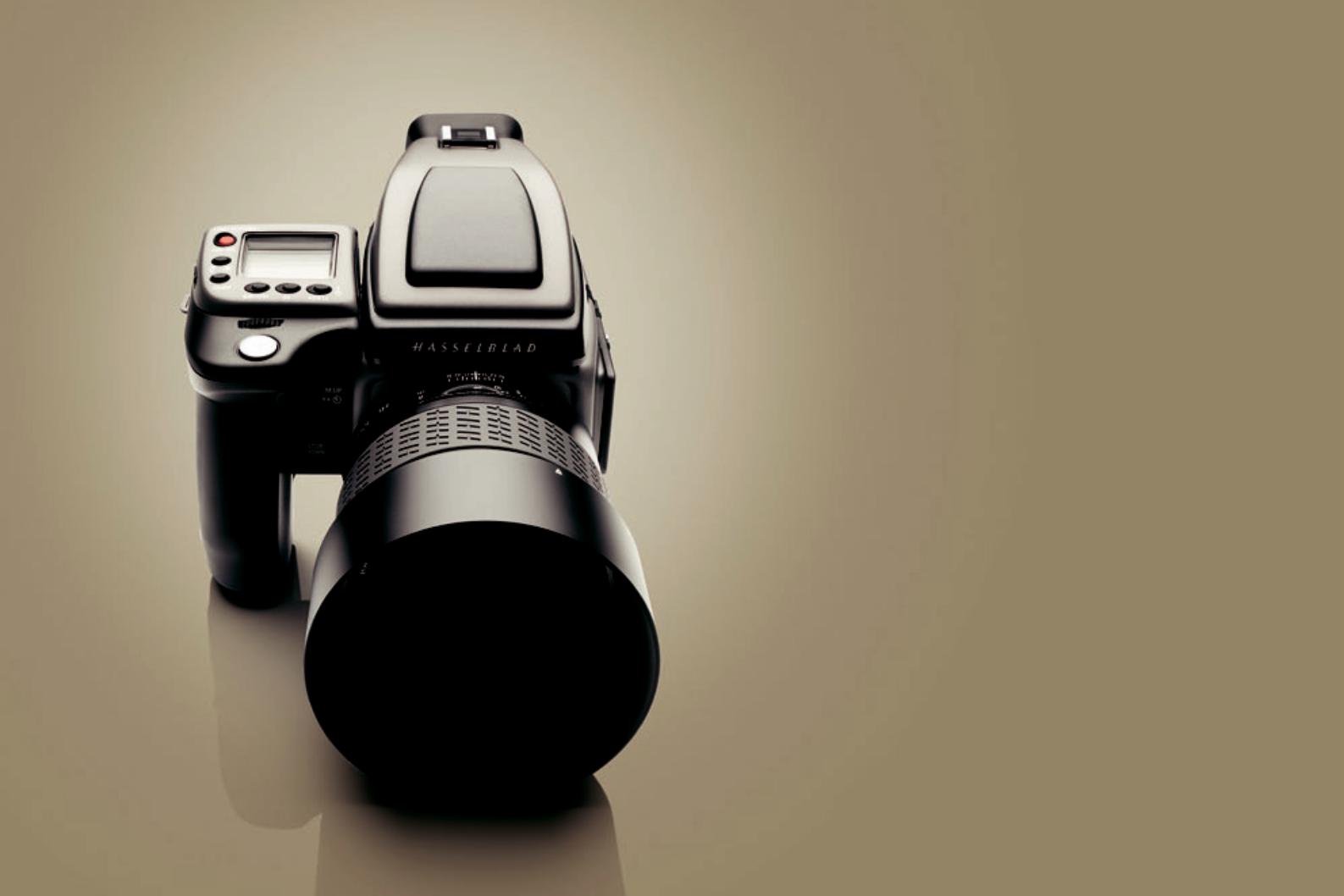Hasselblad H4D-50MS, H4D-40, H4D-60, H4D-50 User Manual

The H4D Family
Model |
Pixel count |
Sensor size |
Sensitivity |
Lens range |
Exp. time |
Multi-shot |
DAC |
TrueFocus |
H4D40 |
|
|
|
|
|
|
|
|
|
|
H4D-40 |
40Mpix |
33.1x44.2mm |
ISO 100-1600 |
HC/HCD |
1/800-4 min |
No |
Yes |
Yes |
|
H4D-50 |
50Mpix |
36.8x49.1mm |
ISO 50-800 |
HC/HCD |
1/800-32 sec |
No |
Yes |
Yes |
|
H4D-50MS |
50Mpix |
36.8x49.1mm |
ISO 50-800 |
HC/HCD |
1/800-32 sec |
Yes |
Yes |
Yes |
|
H4D-60 |
60Mpix |
40.2x53.7mm |
ISO 50-800 |
HC/HCD |
1/800-32 sec |
No |
Yes |
Yes |
02.10 - UK v1 - 80500552

Size Still Matters.
|
In a world where technology grows smaller and smaller, some |
|
|
|
things are still better large. Like imaging sensors and lenses, |
|
|
|
for instance. And while some claim that smaller lenses, |
|
|
2 |
smaller |
sensors, and smaller camera systems can produce |
3 |
|
|
||
|
|
|
|
the same image quality as larger Medium Format DSLRs, there is a reason why 35mm manufacturers continue to claim that their systems can produce “Medium Format quality”.
Simply put, digital photography has made the advantages of Medium Format DSLRs even more obvious. And now with the launch of the H4D-40, Hasselblad is bringing these advantages – larger lenses and sensor size, more advanced optics, increased resolution and clarity, and more – within reach of a whole new generation of photographers.
Providing all the benefits of the renowned Hasselblad system, the H4D-40, with the new True Focus technology, should be an essential part of any serious photographer’s arsenal, bringing the world’s highest image quality to any application where “good enough” simply doesn’t get it.

Hasselblad DSLR Advantage:
Superior Image Quality
4
If your camera system has features that a Hasselblad doesn’t, then you’ve sacrificed image quality to get them.
Let’s get one thing straight – the Hasselblad H4D-40 is not a “one size fits all” photograp hic solution. The H4D-40, like all Hasselblad
products for the past half a century or so, has been designed with an uncompromising approach to image quality.
That means that if achieving marginally higher shutter speeds means compromising on image quality – we don’t do it. If building our cameras from lighter, cheaper materials means compromising on image
quality – we don’t do it. If getting a slightly higher ISO means compromising on image quality
– well, you get the point.
Uncompromising Image Quality
You are most likely aware of the dramatic developments in the 35mm DSLR world that have taken place in recent years. What you may not be aware of is the fact that Medium Format DSLRs have evolved equally dramatically, maintaining –
and even in some cases increasing – the quality gap that has always existed between small format and larger format systems. Today, more than ever, a Hasselblad DSLR is a crucial component in any serious photographic arsenal, providing the perfect tool for any applica-
tion where image quality is important and giving you a level of image quality that 35mm systems cannot deliver.
Not Just Bigger, But Better
The natural choice for any application where image quality is important, the H4D-40 provides the platform for
the ultimate in creative expression and delivers images that will satisfy even the most demanding customer.
The H4D-40 features a 33.1 × 44.2 mm CCD sensor with 40 million pixels, pro viding almost twice the capture area of the largest 35mm DSLR sensors. These 40 million pixels provide the perfect landing site for the large light path delivered by the high performance HC/HCD lens line, capturing more detail and clarity and delivering perfect color rendering without gradation break-ups in even the finest
lit surfaces and cleaner images even at long exposures. This interaction between large scale sensor and lenses forms the foundation for a multitude of image quality enhancements.
What You See is Really What You Get - Hasselblad’s Natural Color Solution
Unlike most competeing solutions, Hasselblad’s Natural Color Solution (HNCS) gives you outstanding and reliable out-of-the-box colors, with correct natural skin tones, specific product colors and other difficult tones reproduced easily and effectively, with no need for special color profiles or templates.
Size Still Matters #1:
Large format sensors and lenses
The largest sensors in the world don’t provide much advantage without optics that are advanced enough to deal with the resolution provided. Hasselblad Medium Format DSLRs combine
the market’s largest sensors with the market’s highest quality, lenses for consistent superior quality.
5
“Choosing a Hasselblad is not a matter of how good you are, it’s a matter of how good you want to be.”
MARCEL pabst
Photo: Marcel Pabst

6
Photo: Kevin Then
A New Approach to Close-
Up Focusing - True Focus and
Absolute Position Lock
True Focus helps solve one of the most lingering challenges in the photographic world: achieving true, accurate focusing throughout the image. Without multi-point auto-focus a typical AF camera can only correctly focus on a subject that is in the center of the image. If you want to focus on a subject outside the center, you must first lock focus on the subject and then re-compose the image. At short distances this re-composing causes focus error, as the plane of focus follows the camera’s movement, perpendicular to the axis of the lens.
The traditional solution for most DSLR cameras has been to equip the camera with a multi-point AF sensor which allows the photographer to fix an off-center focus point. Such multi-point AF solutions are often tedious and inflexible to work with and due to the physics of SLR cameras, the offcenter focus points are all clustered relatively close to
the image center. To set focus outside of this center area, you are still forced to focus first, then shift the camera to reframe, with resulting loss of focus as a result.
To overcome this problem, Hasselblad has used modern yaw rate sensor technology to measure angular velocity in an innovative way. The result is the new Absolute Position Lock (APL) processor, which forms the foundation our new True Focus feature. The APL processor accurately logs camera movement during any re-composing, then uses these exact measurements to
7
calculate the necessary focus adjustment, and issues the proper commands to the lens’s focus motor so it can compensate. The APL processor computes the advanced positional algorithms and carries out the required focus corrections at such rapid speed that no shutter lag occurs. The H4D’s firmware then further refines the focus using the precise data retrieval system found on all HC/HCD lenses.
Even More Accurate Focusing for Photo Pros
The H4D-40 provides noticeably shallower depth-of-field performance compared to 35mm DSLRs at same aperture. This provides for more accurate composing and focusing, especially when combined with the new True Focus technology. The H4D-40 also provides photographers with two basic tilt and shift options - a classic view camera solution and the simple-to-use, portable HTS tilt/shift adapter.
Intelligent Tilt and Shift
As if the H4D’s ability to communicate with all Hasselblad lenses and accessories was not enough, when you add the Hasselblad HTS 1.5 tilt/shift adaptor, your system’s IQ goes up another few points. Precise sensors on all the HTS’s moving parts continually
communicate with the camera engine, ensuring that all shots are tagged with the information needed by the DAC function to refine your Tilt and Shift images when they are processed, ensuring maximum creative flexibility and uncompromising
image quality even at the very edge of the image field when shifted, rotated and tilted to maximum. The HTS 1.5 gives you a portable tilt/shift solution for the HC/HCD lens range from 28mm to 100mm, in effect providing a tilt and shift lens solution at each focal length.
Size Still Matters #2:
True Focus for Accurate
Composing at Close Distance
The large format of the H System cameras provides considerably shallower depth of field than 35mm DSLR cameras, making it much easier to utilize selective focus to creative effect.
In addition, True Focus further refines close range Auto-Focus for extremely accurate re-composing at close distance. You can now feel safe when working creatively with shallow depth-of-field.
